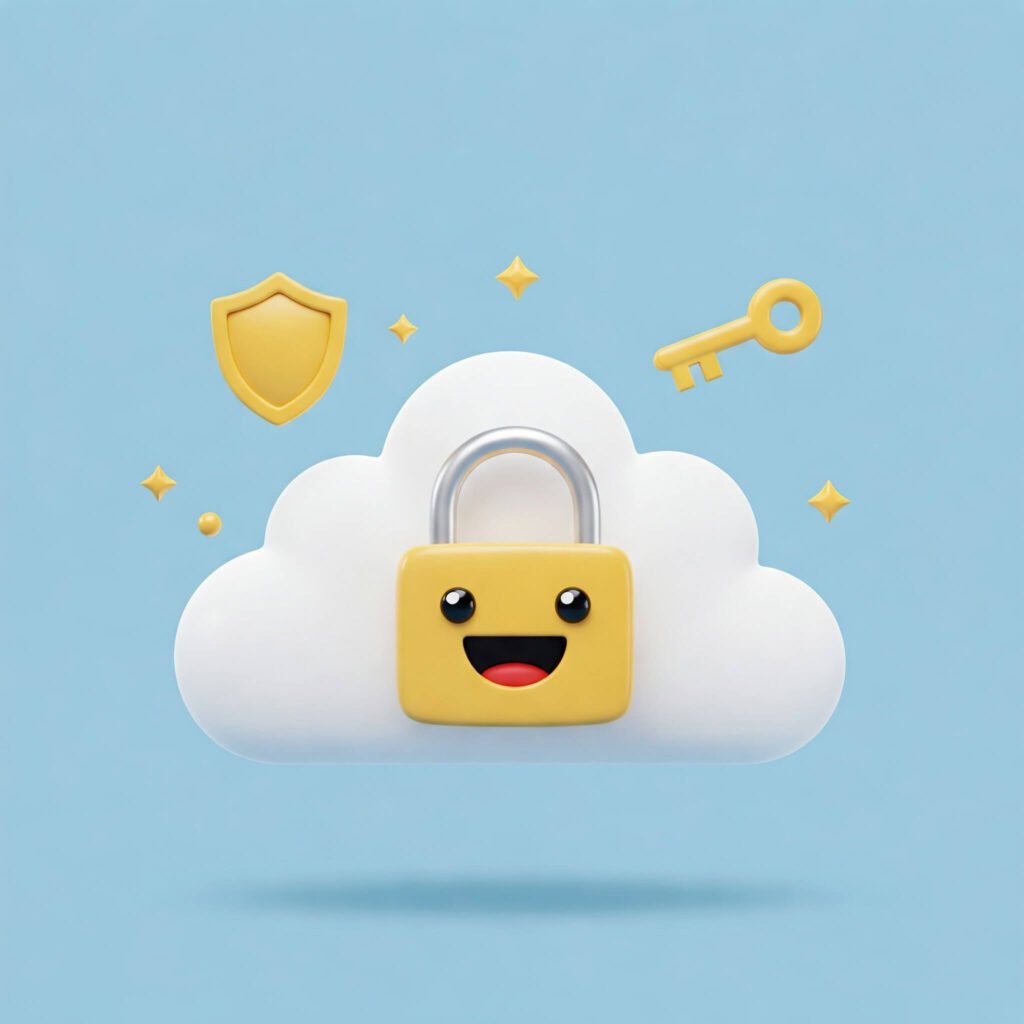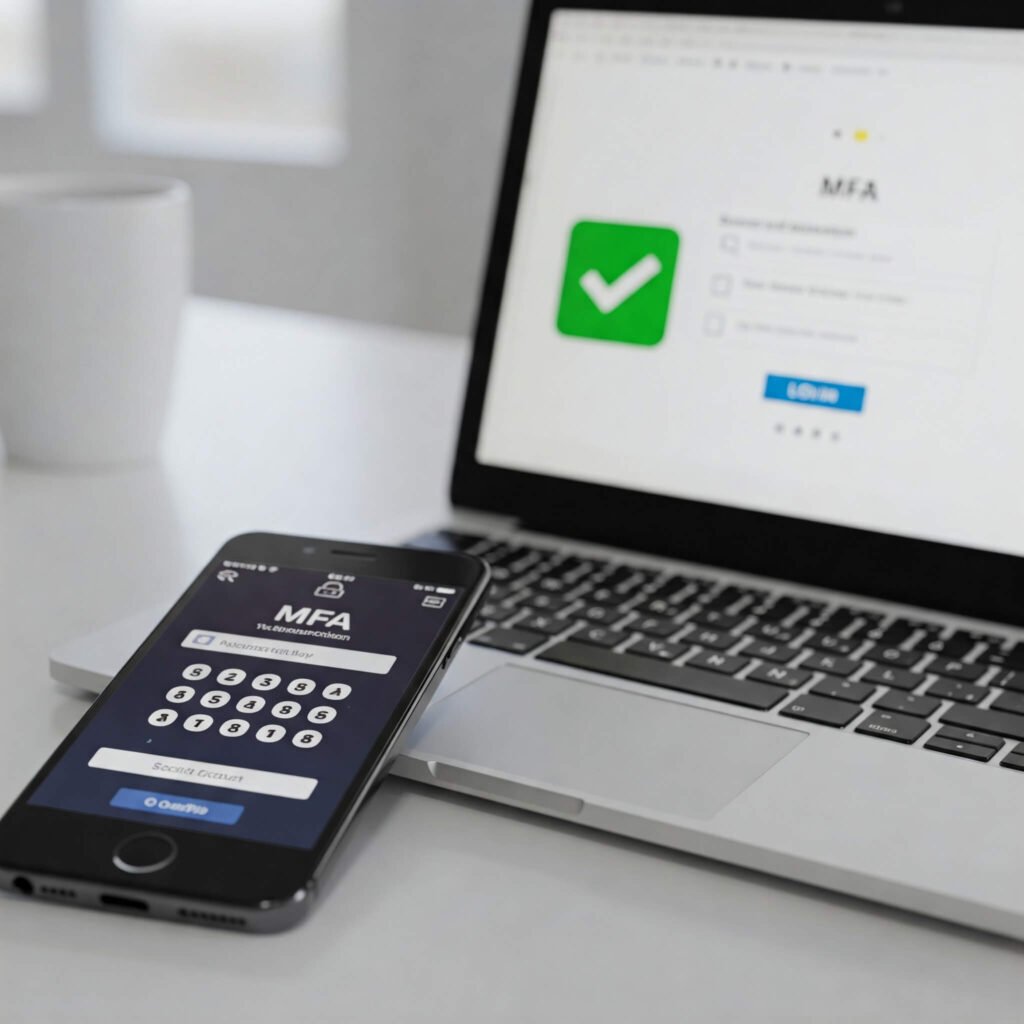Introduction: Making Cloud Security Simple for Everyone
If you’re not a tech whiz, cloud security for non-techies might seem daunting, but it’s easier than you think to keep your data safe. With 85% of businesses using cloud services in 2024 and breaches costing an average of $4.45 million ([IBM]), securing your cloud is essential. This guide explains cloud safety in plain language, offering practical tips and real-world examples to protect your business in 2025. No tech jargon—just clear, simple steps to get started!

What Is Cloud Security?
Cloud security is about keeping your online data—like emails, customer details, or files—safe in platforms like Google Drive or Dropbox. It uses tools and habits to block hackers and protect your information.
Why Everyone Needs Cloud Protection
- Avoids Data Leaks: 60% of cloud breaches in 2024 came from simple mistakes ([Forbes]).
- Saves Money: A single breach can cost thousands.
- Builds Customer Trust: Secure businesses attract loyal clients.
Example: A small bakery saved $10,000 by using Google Cloud’s basic safety features to prevent a data leak ([Google Cloud]).
5 Easy Cloud Security Concepts for Beginners
Here are five simple ways to understand and apply cloud security for non-techies.
1. Encryption: Locking Your Data
Encryption turns your data into a secret code only you can unlock.
- What It Does: Keeps files safe, like a locked box.
- How to Use It: Turn on encryption in Microsoft OneDrive ([Microsoft]).
- Example: A freelancer secured client contracts with OneDrive’s encryption.
2. Multi-Factor Authentication: Extra Security Steps
Multi-factor authentication (MFA) requires a password plus another check, like a code sent to your phone.
- What It Does: Stops hackers even if they know your password.
- How to Use It: Enable MFA in Google Workspace ([Google Cloud]).

3. Strong Passwords: Your First Shield
A strong password is long, unique, and includes letters, numbers, and symbols.
- What It Does: Makes it tough for hackers to guess.
- How to Use It: Create passwords with LastPass ([LastPass]).
- Example: A retailer avoided a hack by using LastPass for strong passwords.
4. Data Backups: Your Plan B
Backups save copies of your files in case of hacks or crashes.
- What It Does: Lets you restore data after a problem.
- How to Use It: Set up backups with Dropbox ([Dropbox]).
5. Trusted Cloud Providers: Choose Wisely
Pick cloud services from well-known companies with good security.
- What It Does: Offers built-in protections like GDPR compliance.
- How to Use It: Use providers like AWS or Azure ([AWS], [Microsoft]).
- Stat: 80% of secure businesses rely on certified cloud platforms ([Gartner]).
How to Start with Cloud Security Today
Get going with these beginner-friendly cloud security for non-techies steps:
- Add MFA: Turn on extra login checks for all accounts.
- Create Strong Passwords: Use LastPass for unique passwords ([LastPass]).
- Turn On Encryption: Check settings in Google Cloud or OneDrive ([Google Cloud], [Microsoft]).
- Back Up Files: Schedule weekly backups with Dropbox ([Dropbox]).
- Learn More: Check free guides from Cloud Security Alliance ([Cloud Security Alliance]).
Example: A small business owner stopped a $5,000 ransomware attack with Dropbox backups and MFA ([Dropbox]).
Mistakes to Avoid for Better Cloud Safety
Even non-techies can steer clear of these common errors:
- Using Weak Passwords: Avoid obvious ones like “123456”.
- Skipping MFA: Don’t leave accounts unprotected.
- Ignoring Software Updates: Old apps are easier to hack.
- Choosing Risky Apps: Stick to trusted providers.

What’s Coming for Cloud Security in 2025
Cloud safety is getting simpler for everyone:
- Easy-to-Use Tools: Platforms like Okta make MFA a breeze ([Okta]).
- Smart Alerts: Tools like Zscaler warn you about risks automatically ([Zscaler]).
- Affordable Security: Small businesses can access budget-friendly options.
These trends make cloud protection easier for non-technical users.
Conclusion: Cloud Security Is Doable for Non-Techies
Cloud security for non-techies is all about taking small, smart steps to protect your business. By using strong passwords, enabling MFA, and choosing trusted providers like AWS, Google Cloud, or Dropbox, you can keep your data safe without tech expertise. Start today and make cloud safety simple in 2025.
Ready to stay secure? Try these easy tips and enjoy peace of mind!































